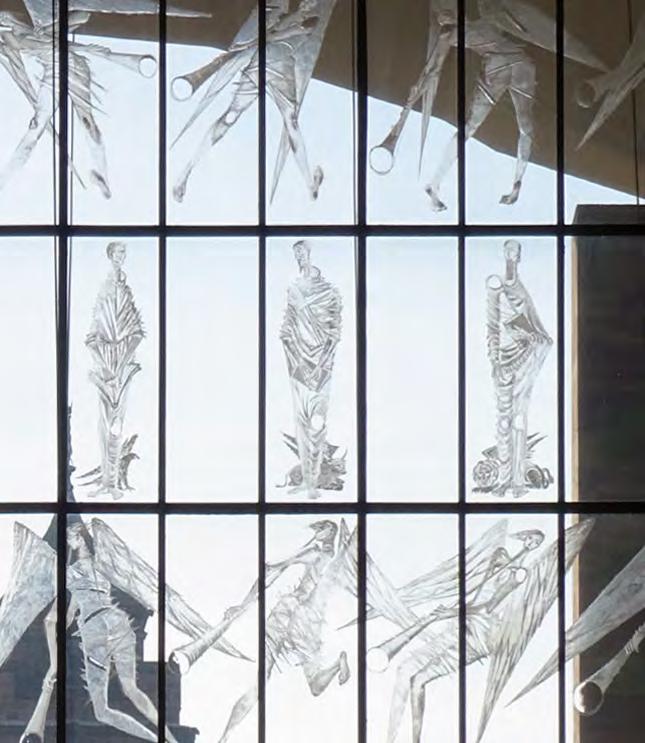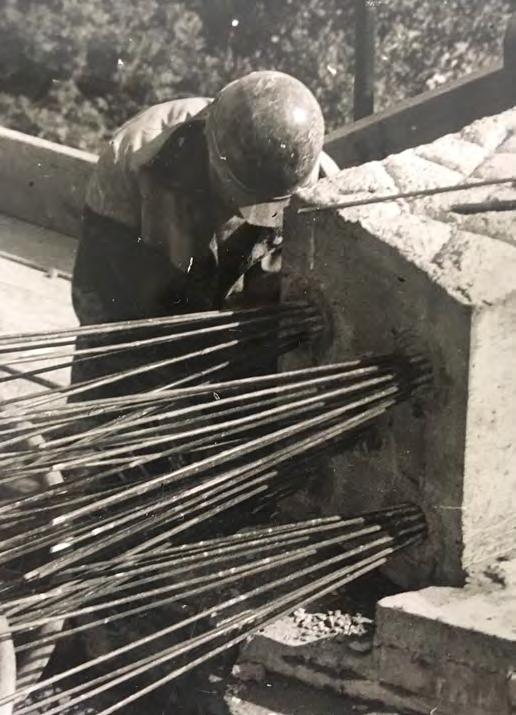UNDERSTANDING THE DEVELOPMENT OF THE PLACE
2.1.3 ST MICHAEL’S – THE SECOND CATHEDRAL St Michael’s church possibly originated as a small Norman Romanesque chapel situated within the bailey enclosure of the Earl of Chester’s castle. Although the castle was slighted in the latter half of the 12th century, the chapel might have survived to be rebuilt in the mid-13th century in an Early English Gothic style as the new parish church of St Michael to serve the former Earl’s Half of Coventry. The rapid growth and economic success of the town in the later medieval period was reflected in a massive expansion of the church from the late 14th century to the end of the 15th century. As a consequence, by 1500 St Michael’s had grown into one of the three largest parish churches in England. This period had also seen the flowering of the Perpendicular Gothic and this great church presented a supreme example of the style.
Work had begun in 1849 on the interior with the stripping of paint and plaster in a ‘tidying-up’ process, typical of the Victorian period. These alterations also included the removal of all the pews and galleries, the re-siting of some of the monuments and the total removal of others. Between 1885 and 1890, Sir George Gilbert Scott’s son, John Oldrid Scott, oversaw the single biggest restoration project in the history of the church, including the complete re-facing of the tower and spire, the repair and re-facing of the nave and chancel clerestoreys, and of the apse and the vestry. Roof beams also needed strengthening and metal flitch plates were inserted in about 1850. These twisted disastrously in the roof fires of 14 November 1940.
In its cloak of new stonework the church was in prime condition for its elevation to cathedral status in 1918 on the creation of the new Coventry Diocese. Between the wars, the only major work carried out in the building was to the sanctuary, where James Murray’s ornate neo-Gothic altarpiece (c.1860) was removed. The stonework behind it was restored to its present condition.
Photo of St Michael’s early 1900s interior
18th century image of Coventry Cathedral with the burial ground in the foreground
Publication reference: for a detailed history of St Michael’s see George Demidowicz, Coventry Old Cathedral A Conservation Plan for the World Monuments Fund (2013) and a concise version in George Demidowicz, St Michael’s Coventry: The Rise and Fall of the Old Cathedral (2015).
Its tower and spire (1370-1450) are of equal significance, but it is curious that the tower was commenced before the great expansion, so that it is orientated in relation to the nave of the much narrower Early English Gothic church, of which only the south porch survives facing Bayley Lane. Other earlier phases of the church can be seen in the two crypts below the north aisle (c.1300, c.1350). After the Reformation, the fabric of the church was allowed to deteriorate and strengthening work was carried out to the tower and spire in the 17th and 18th centuries. It was not until the 19th century that the crumbling exterior stonework of the main outer walls was restored (1854-1870) under the direction of Sir George Gilbert Scott and his assistant, John Drayton Wyatt.
22














